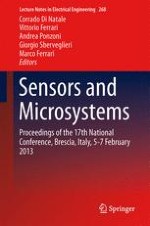2014 | Book
Sensors and Microsystems
Proceedings of the 17th National Conference, Brescia, Italy, 5-7 February 2013
Editors: Corrado Di Natale, Vittorio Ferrari, Andrea Ponzoni, Giorgio Sberveglieri, Marco Ferrari
Publisher: Springer International Publishing
Book Series : Lecture Notes in Electrical Engineering
